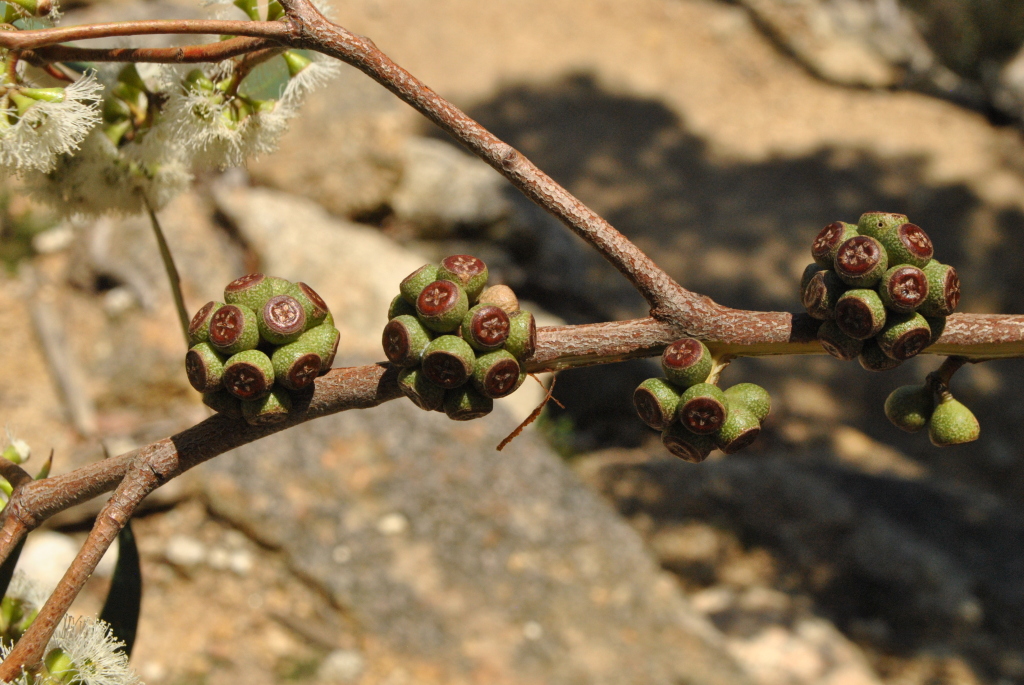Eucalyptus willisii
P.LadigesTree to 10 m tall or mallee; bark rough, fibrous on trunk, extending to limbs. Juvenile leaves sessile, opposite for many pairs, becoming petiolate, lanceolate or falcate, 6–9 cm long, 0.8–3 cm wide, slightly glossy; adult leaves petiolate, alternate, lanceolate to falcate, concolorous, slightly glossy, blue-green; reticulation moderate to sparse, with numerous island oil glands. Inflorescences axillary, unbranched; peduncles to 1 cm long, 11–many-flowered; buds pedicellate, clavate, to 0.4 cm long, 0.3 cm diam., no scar (single operculum); operculum usually hemispherical; stamens mostly inflexed; anthers dorsifixed, reniform; ovules in 2 vertical rows; flowers white. Fruit pedicellate, cupular, 0.4–0.5 cm long, 0.4–0.6 cm diam.; disc level; valves 3(4), rim level; seed brown to dark brown, glossy, smooth, pyramidal but distorted by one curved face, hilum terminal. Flowers spring.
Wim, GleP, VVP, GipP, OtP, WaP, CVU, GGr, DunT, EGL, EGU, WPro, HSF. Apparently restricted to sandy areas and granite hills in Wilsons Promontory. Plants previously included in this species from the Gippsland Lakes region are now recognised as a distinct species (see E. arenicola).
Eucalyptus willisii is closely allied to E. nitida, an endemic species to Tasmania and islands of Bass Strait. Eucalyptus nitida has very variable stature, less rough bark than E. willisii, fewer oil glands in the leaves and toothed edges to the juvenile leaves.
See notes under E. falciformis.
Brooker, M.I.H.; Slee, A.V. (1996). Eucalyptus. In: Walsh, N.G.; Entwisle, T.J., Flora of Victoria Vol. 3, Dicotyledons Winteraceae to Myrtaceae, pp. 946–1009. Inkata Press, Melbourne.
 Spinning
Spinning
